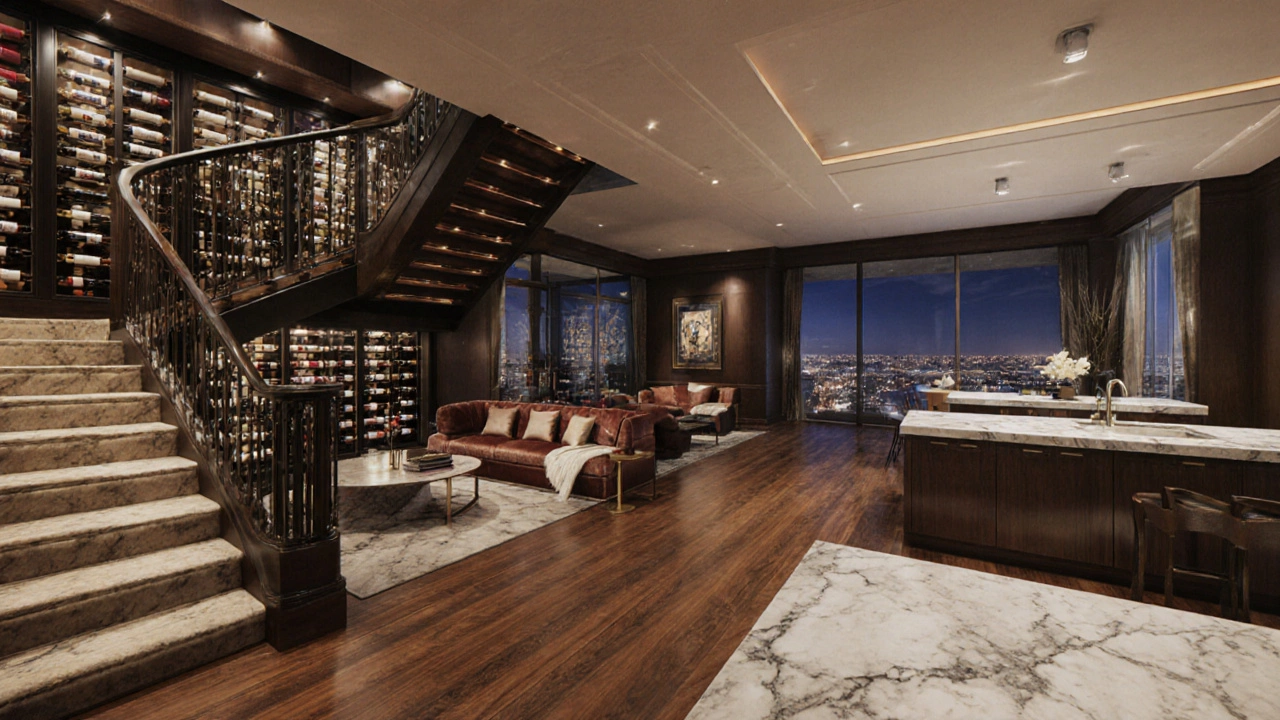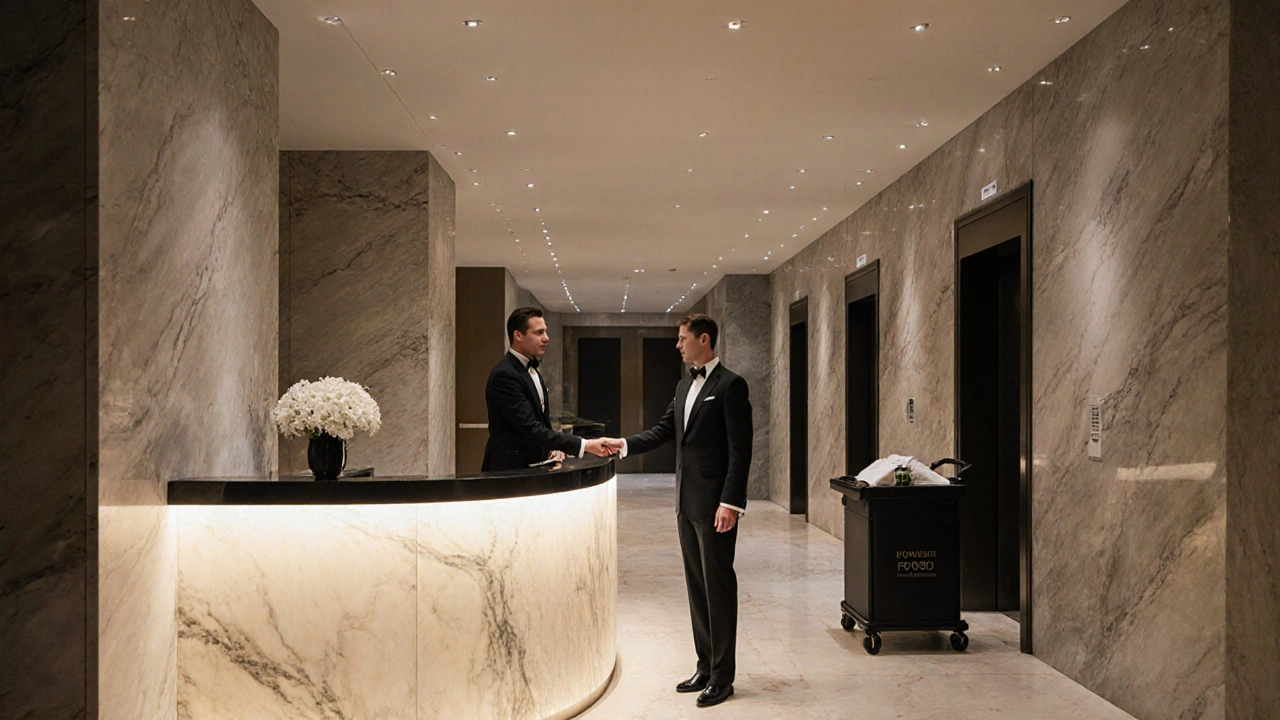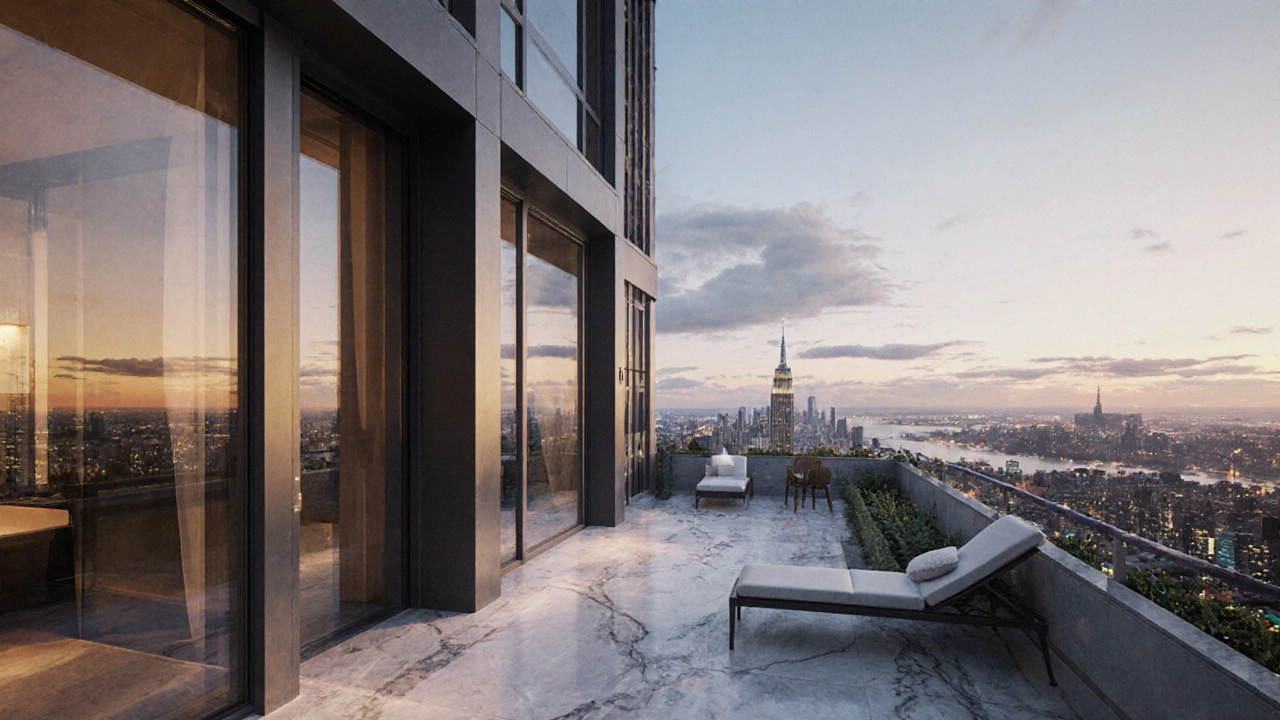Luxury Apartment Type Identifier
Find Your Luxury Apartment Type
Based on the features you select, we'll identify which luxury apartment category best matches your property.
Ever walked past a building with marble floors, floor-to-ceiling windows, and a doorman who knows your name-and wondered what people actually call that kind of place? It’s not just an ‘expensive apartment.’ That phrase sounds like something you’d say when you’re shocked by the rent. The real world has sharper, more specific names for these homes-and knowing them helps you talk like you belong there.
It’s Not Just a ‘Luxury Apartment’
‘Luxury apartment’ is the default term you’ll see in listings, but it’s also the most generic. Think of it like calling a sports car a ‘fast car.’ It’s true, but it doesn’t tell you if it’s a Porsche 911 or a Tesla Roadster. In real estate, the difference between a luxury apartment and a penthouse is huge. A penthouse isn’t just on the top floor-it’s designed to feel like a private sky villa. Think private elevators, wraparound terraces, and views that stretch for miles. Developers charge 30% to 50% more for a penthouse compared to a standard unit on the same floor, even if the square footage is similar.
Then there’s the mansion apartment. This isn’t a house with a garden-it’s a multi-room, multi-level unit inside a high-rise that feels like a townhouse in the sky. These often have separate living and dining wings, home theaters, wine cellars, and chef-grade kitchens. You’ll find them in buildings like 15 Central Park West in New York or The Shard’s top floors in London. These units aren’t just expensive; they’re engineered for exclusivity.
The Hidden Language of High-End Living
Real estate agents don’t say ‘expensive.’ They say ‘premium.’ That word shows up in marketing materials for units with upgraded finishes: Calacatta marble countertops, Miele appliances, smart-home systems that control lighting, temperature, and security with a single voice command. A ‘premium unit’ might cost $2 million, but it’s not a penthouse. It’s a step below-still luxurious, but without the rooftop access or private elevator.
Then there’s the term residence. You’ll see ‘One Hyde Park Residence’ or ‘The Ritz-Carlton Residences.’ That’s not marketing fluff. In luxury markets, calling something a ‘residence’ signals it’s part of a hotel-grade service building. These come with 24/7 concierge, in-home spa services, private dining rooms, and valet parking. You don’t just live there-you’re hosted. The average price for a residence in a top-tier hotel-branded building is $3,500 per square foot in cities like New York, Miami, or Hong Kong. That’s more than double the cost of a standard luxury unit.
What Makes an Apartment ‘Expensive’?
Price alone doesn’t define luxury. A $1.5 million apartment in a 1980s building with outdated plumbing isn’t a luxury home-it’s just overpriced. Real luxury comes from three things: location, craftsmanship, and service.
Location means being in a neighborhood that’s both rare and desirable. Think the Upper East Side, Knightsbridge, or the Golden Triangle in Dubai. These areas don’t just have good schools or restaurants-they have history, status, and scarcity. There are only so many buildings in these zones, and even fewer with the right views or privacy.
Craftsmanship is about materials you can’t find in a Home Depot. Hand-laid Italian tile. Solid walnut floors sanded by craftsmen who’ve been doing it for 40 years. Custom bronze door handles made in France. These aren’t upgrades-they’re the baseline. A 2024 survey by the Luxury Real Estate Institute found that 87% of buyers in top-tier markets cited material quality as their top reason for choosing one unit over another, even when prices were similar.
Service is the silent differentiator. A luxury apartment without a concierge who can book you a table at a Michelin-starred restaurant at 11 p.m. isn’t truly luxury. It’s just a fancy box. The best buildings offer everything from private chefs to pet spas. Some even have in-residence wellness consultants who design personalized fitness and nutrition plans.

What’s Not a Luxury Apartment?
Not every high-priced apartment deserves the label. Here’s what to watch out for:
- Redesigns-A developer takes a standard unit, slaps on some quartz counters, calls it ‘modern,’ and hikes the price 20%. That’s not luxury. That’s rebranding.
- Views without privacy-A unit with a great skyline view but no soundproofing, no window tinting, and neighbors who leave their lights on all night? That’s not luxury. That’s a postcard with noise pollution.
- Branded names without service-Some buildings use the word ‘Residences’ just to sound fancy. Check if they actually have staff on-site 24/7. If the front desk closes at 8 p.m., it’s not a residence.
There’s also the myth that bigger always means better. But in luxury markets, the most coveted units are often the ones that feel intimate. A 1,200-square-foot penthouse with three private terraces and a dedicated butler can be more desirable than a 3,000-square-foot unit with no outdoor space.
Who Buys These Places?
It’s not just billionaires. While ultra-high-net-worth individuals do buy these, a growing number are international investors, tech founders, and even successful professionals who’ve cashed out equity from earlier ventures. In 2024, nearly 40% of luxury apartment buyers in London and New York were under 45. They’re not buying for status alone-they’re buying for control, privacy, and quality of life.
They don’t care about the number of bedrooms as much as they care about the number of quiet spaces. A home office that’s truly soundproof. A master suite with its own ventilation system. A kitchen that doesn’t smell like last night’s dinner. These are the features that matter now.

How to Spot Real Luxury
If you’re looking, here’s what to ask:
- Is the building managed by a luxury hotel group? (e.g., Four Seasons, Aman, Ritz-Carlton)
- Are the finishes custom-made or mass-produced?
- Is there a dedicated concierge team, or just a front desk?
- What’s the maintenance fee? Real luxury units often have fees over $2 per square foot per month. If it’s under $1.20, it’s probably not true luxury.
- Can you tour the building’s service areas? The back-of-house-kitchen prep rooms, laundry, HVAC-tells you everything. If it’s messy or outdated, the front-of-house is just a facade.
And never trust the word ‘exclusive’ on its own. Every new development claims exclusivity. Look for proof: How many units are left? Are they selling below asking? Are there waitlists for parking or storage? Real exclusivity means scarcity-and that’s something you can verify.
The Bottom Line
An expensive apartment isn’t a category. It’s a symptom. The real labels-penthouse, mansion apartment, residence-tell you what kind of life you’re signing up for. If you’re paying $2 million or more, you’re not just buying space. You’re buying silence, control, craftsmanship, and service. The name matters because it tells you whether you’re getting a product… or a lifestyle.
What’s the difference between a luxury apartment and a penthouse?
A luxury apartment is a high-end unit with premium finishes and services, but a penthouse is specifically located on the top floor of a building and usually includes exclusive features like private elevators, large terraces, and unobstructed views. Penthouses often cost 30-50% more than other units in the same building, even if they’re smaller.
Is a mansion apartment the same as a townhouse?
No. A mansion apartment is a large, multi-room unit inside a high-rise building that mimics the layout and features of a townhouse-think multiple levels, private entrances, and separate living areas. A townhouse is a standalone building with its own land and exterior walls. Mansion apartments are vertical; townhouses are horizontal.
Why do some luxury apartments have higher maintenance fees?
Luxury apartments with hotel-style services-like 24/7 concierge, in-home spa, private dining, and valet-require more staff and upkeep. Maintenance fees above $2 per square foot per month cover these services, premium building systems, and high-end materials that need constant care. Lower fees usually mean fewer services and less upkeep.
Can a luxury apartment be a good investment?
Yes, but not always. Luxury apartments in top cities like New York, London, and Singapore have held value better than mid-tier properties during economic downturns. However, they’re harder to sell quickly and have fewer buyers. They’re best for long-term holds or as a lifestyle asset, not a short-term flip.
What’s the most common mistake people make when buying a luxury apartment?
Focusing on square footage or views alone. Many buyers overlook soundproofing, ventilation, service quality, and the building’s operational reputation. A unit with a perfect view but noisy elevators and a broken concierge system will feel like a disappointment. Always tour the back-of-house and talk to current residents.
